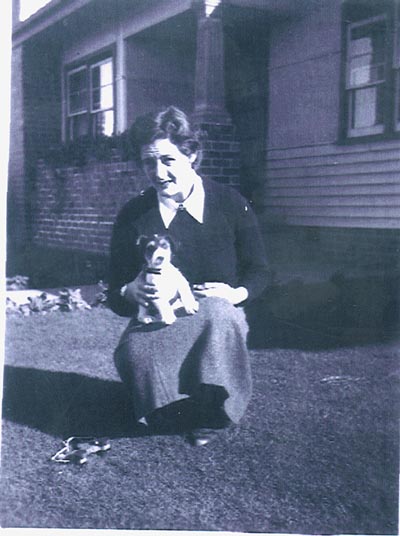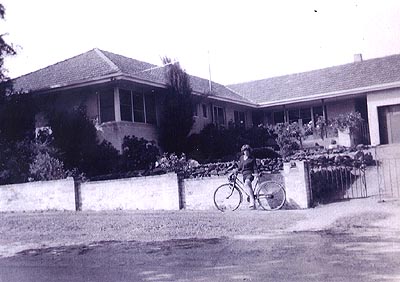Quilt No.1009FG - Fiona Gavens
2200 x 1720 mm.
Quilt made by Deborah Gavens in Colac, Victoria, from the late 1950's to early 1960's (took about five years to make). Deborah owned and used the quilt until she passed it on to her daughter Fiona in the late 1980's. Quilt is not used.
"My mother, Deborah Gavens (nee Lee), arrived in Australia as a war bride in 1946, having married Philip Gavens, an Australian pilot, in London just before his departure.
Five daughters were born between 1948 and 1958 and the oldest four in particular were dressed in beautiful, matching vyella dresses embellished with smocking and embroidery. Mum made most of these dresses, which reflected her well-heeled British background.
Mum loved sewing but had very little time to do no-utilitarian work when we were young. I have strong memories of her mainly sewing this quilt at meal times when we were having dessert (which she rarely ate). That is why it took about five years to create!
When Mum finished piecing the quilt and started embroidering it, it was our job to find the seams that she had missed, and we would often talk about who wore what dress and whom the dresses had been passed on to.
The quilt was used as a comforter when we were sick and, later on, when grandchildren visited.
I have the original book containing the instructions on how to piece and embroider the quilt, entitled 'Pictures and Patchwork' by Priscilla M. Warner, the Dryad Press, Leicester, 1950. Mum still has a set of metal hexagon templates made for her by Dad.
I have no doubt that this quilt contributed to my evolution into a professional quilter (1978 - 1995), as it was obvious that creating something beautiful by hand was of intrinsic importance to Mum. Her father designed and stitched beautiful wool tapestry, and my father was a carpenter/builder, so it was natural to be a designer and maker.
I sewed from an early age and in my late teens embarked on my first quilt of hand-sewn hexagons. This took several years to make, and ensured I would only sew with a machine from then on! It is interesting to look at Mum's quilt and the mix of techniques, as I always felt free to use whatever techniques I needed, and wonder now if that was another subconscious influence." [Fiona Gavens]


b-Fiona(6), l-Thalia(9), r-Juliet(4),f-Clare(6)

Related Quilts:
1860 x 1730mm
1750 x 1100mm
840 x 840mm
2420 x 1220
1625 x 925mm








